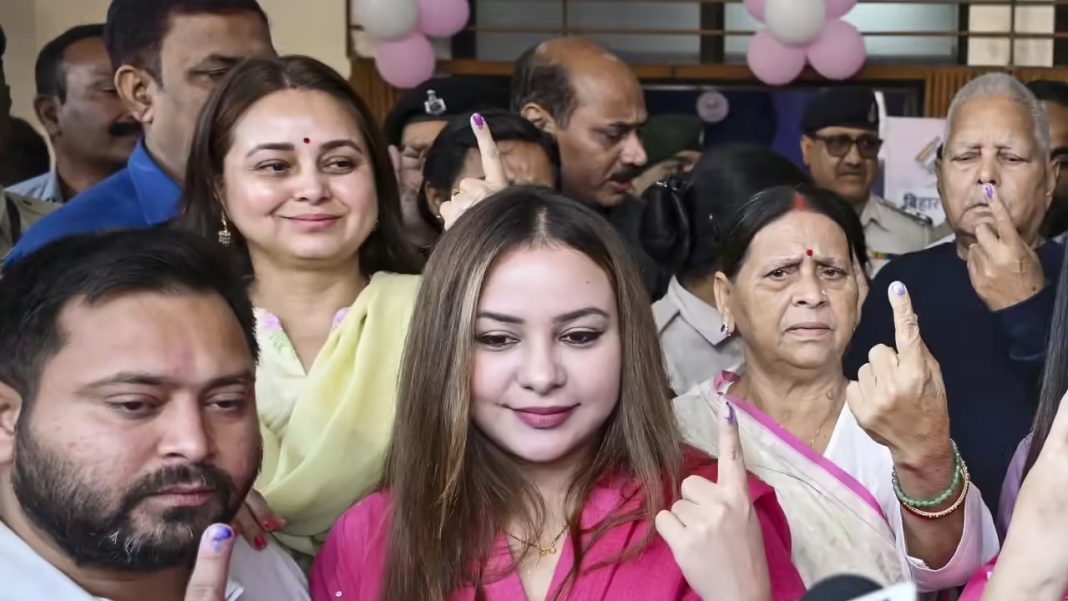As the political fervor grips Bihar, the state’s multi-phase assembly elections witnessed a significant display of democratic engagement, particularly in the capital district of Patna. On a crucial polling day, Patna recorded a voter turnout of 57.9%, a figure that underscores the active participation of its diverse populace. From enthusiastic first-time voters to resilient centenarians, citizens queued up at polling booths, reaffirming their faith in the electoral process and their desire to shape the state’s future.
The polling, conducted amidst stringent COVID-19 safety protocols, saw a broad spectrum of the electorate step out, reflecting a strong sense of civic duty and an eagerness to cast their ballot. This turnout, while not the highest in the state, signals a considerable level of engagement in one of Bihar’s most prominent urban-rural mixes.
A Day of Democratic Resolve: Patna’s Polling Landscape
The polling day in Patna district was marked by an orderly and generally peaceful atmosphere, contrasting sharply with some of the historical narratives associated with elections in the region. Polling stations across the district, from the bustling urban centers to the quieter rural pockets, observed a steady stream of voters throughout the day. Election Commission officials, along with security personnel, worked diligently to ensure a smooth and fair process, providing a conducive environment for citizens to exercise their franchise.
A particularly heartening sight was the widespread participation across age groups. Young voters, many of whom were casting their ballot for the first time, arrived with palpable excitement, often accompanied by friends. They spoke of issues ranging from employment opportunities and educational reforms to infrastructure development, demonstrating a keen awareness of their role in governance. On the other end of the spectrum, elderly citizens, some requiring assistance, also made their way to the booths, symbolizing an unwavering commitment to democracy. Their presence underscored a generational continuity in the democratic spirit, highlighting that the right to vote remains a cherished privilege for all.
The 57.9% turnout in Patna district is a testament to the collective resolve of its residents. Despite the ongoing pandemic and the logistical challenges it presented, the electorate demonstrated a readiness to participate, highlighting the importance they attach to selecting their representatives and influencing public policy.
Factors Driving Voter Engagement
Several factors likely contributed to Patna’s voter turnout. Local issues, such as urban development, civic amenities, and specific community concerns, played a significant role in motivating voters. Additionally, broader state-level narratives surrounding governance, economic development, and social welfare schemes resonated with the electorate, compelling them to make their choices known.
The active campaigns run by various political parties and candidates also played a crucial role in mobilizing voters. From door-to-door canvassing to large rallies, political outreach efforts ensured that the election remained at the forefront of public discourse. Furthermore, the Election Commission of India’s initiatives, including voter awareness campaigns and efforts to make polling accessible, particularly for senior citizens and persons with disabilities, contributed positively to the turnout figures.
The demographic shift, with a growing number of young voters, is also an increasingly important factor. These young electors, often more digitally connected and socially aware, are keen to see tangible changes and are often less bound by traditional loyalties, making their vote a powerful determinant in electoral outcomes. As one young voter, Priya Sharma, a 22-year-old student from Kankarbagh, articulated, “This is our future at stake. We can’t just sit back and complain; we have to be part of the change. My vote is for better opportunities, for a Bihar where young people don’t have to leave to find work.”
What the Turnout Signals for Patna’s Political Future
The 57.9% turnout in Patna district holds significant implications for the political landscape. While it’s slightly lower than the district’s turnout in the 2015 assembly elections (59.6%), it still represents a robust participation given the circumstances. A healthy turnout generally indicates strong voter interest and suggests that the electorate is actively engaged with the choices presented to them. Political analysts will be scrutinizing these figures closely to gauge anti-incumbency sentiments, the effectiveness of various alliances, and the performance of individual candidates.
The enthusiastic participation of both the young and the old suggests a diverse set of expectations from the new government. The youth are likely to prioritize modern development, technology, and job creation, while the older generation might lean towards stability, welfare programs, and agricultural support. The winning candidates will need to address this broad spectrum of demands to effectively represent their constituents.
Ultimately, the 57.9% turnout in Patna district is a reaffirmation of the strength of India’s democracy. It highlights the citizens’ unwavering belief in their power to effect change through the ballot box, regardless of age or circumstance. As the counting day approaches, all eyes will be on the results to see how this collective will translates into the formation of Bihar’s next government.




